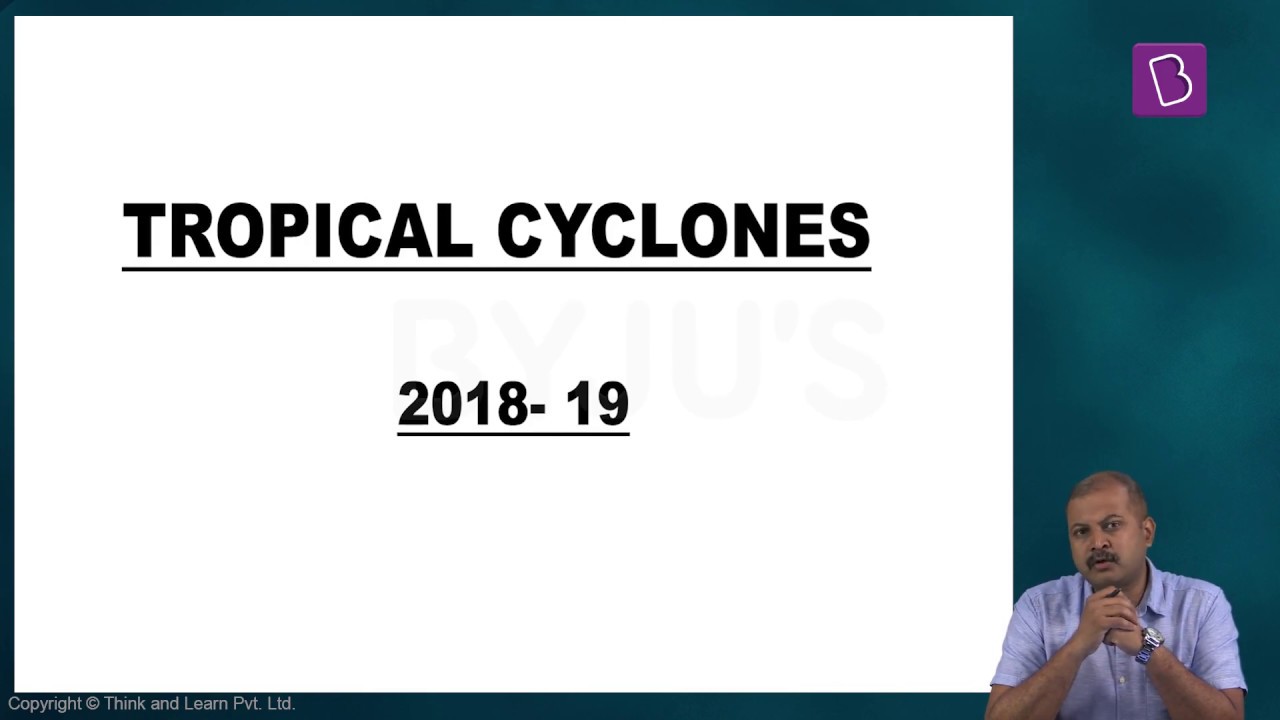A tropical cyclone is a weather phenomenon that is essentially a rapidly rotating storm system with characteristics such as a low-pressure center, strong winds and thunderstorms that produce heavy rain, among others.
The topic, ‘Tropical Cyclone’ is important for IAS Exam as it is an important section of Geography which comes under both Prelims and UPSC Mains GS-I. The article will about in detail about the Tropical Cyclones, their characteristics and their formation.
| Learn from the IAS Toppers to know what to do or what not to during your exam preparation!!
To strengthen your preparation for the upcoming UPSC exam, check the following links: |
What are the characteristics of a tropical cyclone?

Tropical cyclones or cyclones, in general, have different terms and names depending on their location and strength.
- These include ‘hurricanes’ in the North Atlantic Ocean and eastern North Pacific region,
- While being referred to as typhoons in the western North Pacific region.
- The nomenclature in the Southern Pacific and the Indian Ocean severe tropical cyclones or simply cyclones.
Tropical cyclones are compact, circular winds with a diameter of 320km. Its winds swirl around a central region that has low atmospheric pressure. The rotation of the winds is largely driven by the low-pressure centre and by the rotation of the Earth.
Thus cyclones rotate in a counterclockwise direction in the Northern Hemisphere and in a clockwise direction while in the Southern Hemisphere. Unlike popular belief, cyclones do not cause massive damage to underwater coral reefs. To know how these tropical cyclones are formed, read below.
The passage of a tropical cyclone over the ocean causes the upper layers of the ocean to cool substantially, which can influence subsequent cyclone development. This cooling is primarily caused by wind-driven mixing of cold water from deeper in the ocean with the warm surface waters. This effect results in a negative feedback process that can inhibit further development or lead to weakening. Additional cooling may come in the form of cold water from falling raindrops (this is because the atmosphere is cooler at higher altitudes). Cloud cover may also play a role in cooling the ocean, by shielding the ocean surface from direct sunlight before and slightly after the storm passage.
How are Tropical Cyclones formed?
In the tropics, there is a narrow zone of low pressure which stretches across the equator. The winds on the north side of this zone blow from the north-east (the north-east trades) and on the southern side blow from the south-east (south-east trades).
The low-pressure area is heated over the warm tropical ocean which leads to the rise of air from this are in discrete parcels, ultimately causing the formation of thunderstorms. This creates a flow of very warm, moist, rapidly rising air, leading to the development of a centre of low pressure, or depression, at the surface.
There are various trigger mechanisms required to transform these cloud clusters into a tropical cyclone which is at least a trigger for bad weather. These trigger mechanisms depend on several conditions being ‘right’ at the same time. The most influential factors are:
- A source of warm, moist air derived from tropical oceans with sea surface temperatures normally in the region of, or in excess, of 27 °C;
- Winds near the ocean surface blowing from different directions converging and causing air to rise and storm clouds to form;
- Winds which do not vary greatly with height – known as low wind shear. This allows the storm clouds to rise vertically to high levels;
- Sufficient distance from the equator to provide spin or twist.
La Nina, a weather pattern most commonly found in the Southern Pacific region also cause cyclones depending upon the weather condition at the time.
Where and when do tropical cyclones occur?
Many tropical cyclones eventually drift far enough from the equator to move into areas dominated by westerly winds (found in the middle latitudes). These winds tend to reverse the direction of the tropical cyclone to an eastward path. As the tropical cyclone moves polewards it picks up forward speed and may reach 30 m.p.h. or more. An average tropical cyclone can travel about 300 to 400 miles a day, or about 3,000 miles before it dies out.
Tropical cyclones which occur in the Atlantic region usually comprise less than 15% of global tropical cyclone activity. Tropical cyclones also occur in various parts of the Pacific Ocean and can affect coastal regions of Mexico, south-east Asia, north-east Australia and the South Pacific islands. Those that form in the Indian Ocean can affect India, Bangladesh, north-west Australia, some parts of East Africa and Indian Ocean islands such as Mauritius and Madagascar.
To know how monsoons in India take place, visit the linked article.
Tropical Cyclones Facts for UPSC Prelims
- Tropical cyclones are called by different names in different regions given below:
- Hurricane – Atlantic
- Typhoon – Western Pacific and the South China Sea
- Willy-Willies – Western Australia
- Cyclone – Indian Ocean
- They originate and intensify over warm tropical oceans
- A pre-existing weak low-pressure area or low-level-cyclonic circulation is a factor for its occurrence
- Read NCERT Notes on Tropical Cyclones in the linked article
Tropical Cyclones – UPSC Notes:- Download PDF Here

Relevant Links
Click on relevant links given in the table to read similar articles and more information regarding the IAS Exam.
Related Links
| NCERT Notes of Geography | Static GK | Erosional Landforms |
| IAS Eligibility | Climate Change | Tropical Rain Forest |
| Types of Rainfall | Coastal Erosion in India | Static GK |
Comments